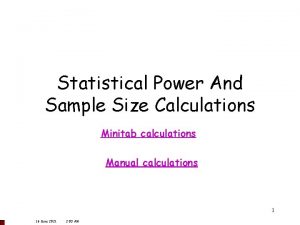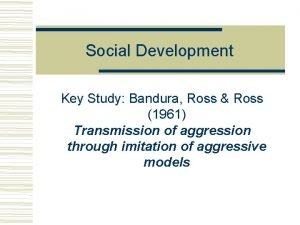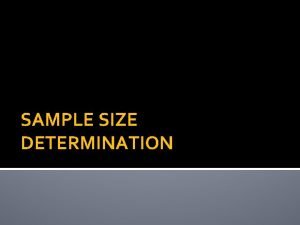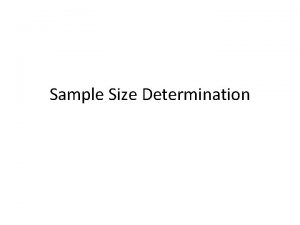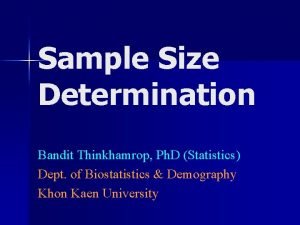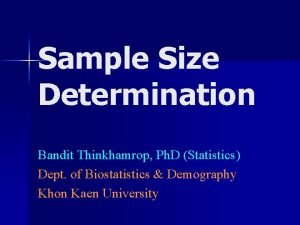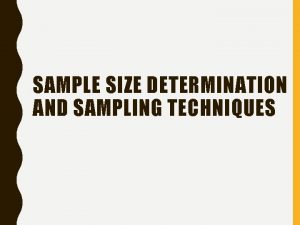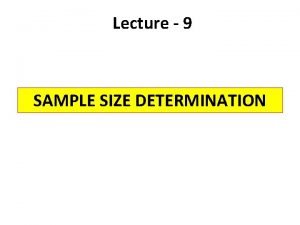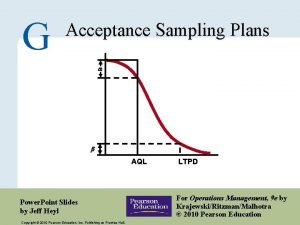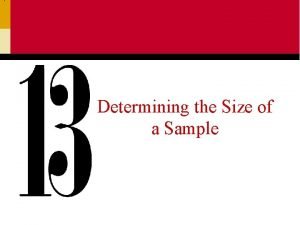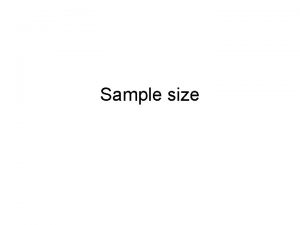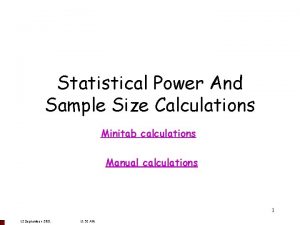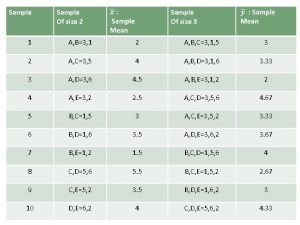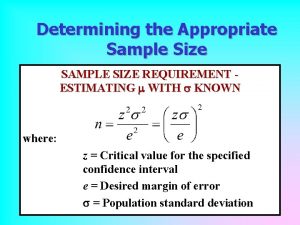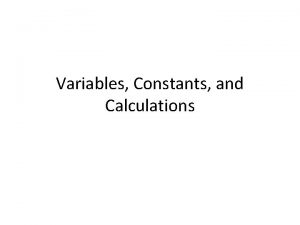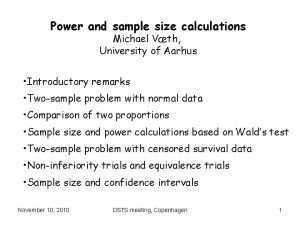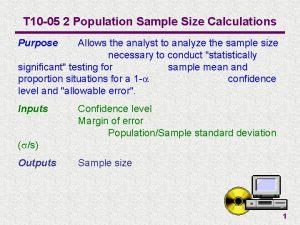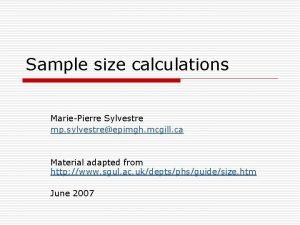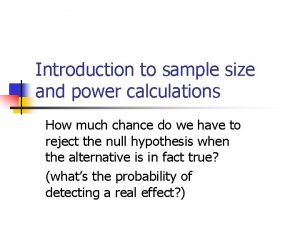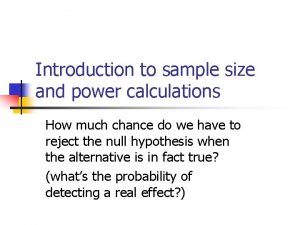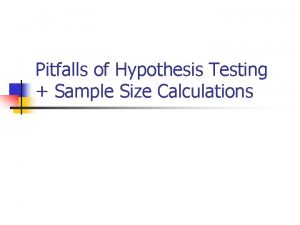Advances in nonstandard sample size calculations the ART



































- Slides: 35

Advances in non-standard sample size calculations: the ART suite Ian White MRC Clinical Trials Unit at UCL Stata Biostatistics and Epidemiology Virtual Symposium 18 Feb 2021 MRC Clinical Trials Unit at UCL

Plan 1. 2. 3. 4. 5. 2 Sample size calculation in clinical trials Stata tools: art and power Binary outcome: improving artbin Categorical outcome: developing artcat Software testing MRC Clinical Trials Unit at UCL

Acknowledgements • Sophie Barthel • Patrick Royston • Abdel Babiker • Ella Marley-Zagar • Tim Morris • Max Parmar • Babak Choodari-Oskooei all from MRC CTU 3 MRC Clinical Trials Unit at UCL

Why calculate sample size? • Sample size calculations arise in planning a study • We’re going out to collect new data. How much data should we collect to answer our research question? − especially important for funding applications • Sometimes researchers can’t change their sample size − e. g. re-analysing existing data − e. g. collecting new data but sample is fixed − even so, they may need to show in advance that the analysis is likely to answer their research question (“power”) • This talk is about calculations either way: power ↔ sample size • All motivated by randomised trials but applicable to observational studies with little confounding 4 MRC Clinical Trials Unit at UCL

Why is it important to get it right? • Increasing sample size is expensive, time-consuming, even painful − don’t want to do it if unnecessary • Too small a sample size makes it more likely to fail to answer the research question − and can cast doubt on the whole study • As trials progress, it’s very common to need to modify the sample size calculation due to − slow recruitment − new evidence about likely effect / nuisance parameters / target population • Forms key part of discussions with funders 5 MRC Clinical Trials Unit at UCL

Theory of sample size calculations 6 MRC Clinical Trials Unit at UCL

Theory of sample size calculations • 7 MRC Clinical Trials Unit at UCL

Sample size calculations in Stata ART: Assessment of Resources for Trials • Royston P, Babiker A. A menu-driven facility for complex sample size calculation in randomized controlled trials with a survival or a binary outcome. Stata J 2002; 2: 151– 63. • Barthel FM-S, Royston P, Babiker A. A menu-driven facility for complex sample size calculation in randomized controlled trials with a survival or a binary outcome: Update. Stata J 2005; 5: 123 – 9. • Royston P, Barthel FM-S. Projection of power and events in clinical trials with a time-to-event outcome. Stata J 2010; 10: 386– 94. power suite in Stata 13 (2013) 8 MRC Clinical Trials Unit at UCL

Why do we still need ART? • artsurv for time-to-event outcome: allows >2 groups, staggered entry, non-constant hazard, non-proportional hazards, withdrawal from allocated treatment, treatment cross-over (switching) • artbin for binary outcome: allows >2 groups, method options, non-inferiority trial 9 MRC Clinical Trials Unit at UCL

New work on artbin • • 10 Providing clear description of methods used Simpler syntax More options and better syntax for non-inferiority methods Coherent output MRC Clinical Trials Unit at UCL

Non-inferiority (NI) trials • 11 MRC Clinical Trials Unit at UCL

Superiority: artbin, pr(. 4. 2) Answer 12 MRC Clinical Trials Unit at UCL

Non-inferiority: old syntax artbin, pr(. 2. 4) ni(1) Answer 13 MRC Clinical Trials Unit at UCL

Non-inferiority: new syntax artbin, pr(. 2. 2) margin(. 2) Clear NH, AH Outcome type inferred 14 Answer MRC Clinical Trials Unit at UCL

Advantages of this NI approach • clarity • can infer & report whether outcome is favourable or unfavourable • can design a NI trial with a non-null expected treatment effect − e. g. STREAM trial in drug-resistant TB with favourable outcome: artbin, pr(. 7. 75) margin(-. 1) aratio(1 2) 15 MRC Clinical Trials Unit at UCL

Being methodical about calculation options Settings 2 arms >2 arms Options superiority non-inferiority continuity correction heterogeneity trend Methods Test types Unconditional Distant: no approximation 16 Conditional Score Wald Score local (NN) N/A condit (N/C for NI) default (NA) wald (AA) N/C NN, NA, AA: formula types. N/A: not applicable. N/C: not coded. MRC Clinical Trials Unit at UCL

New program: artcat 17 MRC Clinical Trials Unit at UCL

Motivation • In 2020, I was involved in designing a trial of treatments for COVID-19 that could be used in an African outpatient setting − thanks to the team incl. Debbie Ford, Hanif Esmail, Di Gibb, Anna Turkova, Annabelle South • We considered a 3 -level ordered categorical outcome: death; in hospital; or alive and not in hospital • Other COVID-19 trials have used other ordered categorical outcomes, typically with 6 -8 levels • We needed sample size calculations for an ordered categorical outcome, and they were not available in Stata • Ideas apply beyond COVID-19 18 MRC Clinical Trials Unit at UCL

Whitehead’s method • 19 MRC Clinical Trials Unit at UCL

Limitations of Whitehead’s method 1. It requires a common odds ratio at the design stage. But e. g. in the COVID-19 trial, we considered a 3 -level outcome of death / hospitalisation / OK, and assumed a common risk ratio of 0. 75 for the 2 adverse outcomes. 2. It uses the NN method, so may be inaccurate 3. It doesn’t allow for non-inferiority trials 20 MRC Clinical Trials Unit at UCL

New proposal – “ologit” method • 1=death . 08 . 06 2=hospitalisation . 24 . 18 3=OK . 68 . 76 Outcome 21 Rand Prob 1 c . 04 2 c . 12 3 c . 34 1 e . 03 2 e . 09 3 e . 38 MRC Clinical Trials Unit at UCL

artcat – outline of syntax Immediate command, like artbin, artsurv, power User specifies: 1. The outcome probabilities in the control arm a. directly: pc(0. 08 0. 24) b. or as cumulative probabilities: pc(0. 08 0. 32) cum 22 2. The probabilities in the experimental arm a. directly: pe(0. 06 0. 18) b. as cumulative probabilities: pe(0. 06 0. 24) cum c. via a common OR or RR: or(0. 7) or rr(0. 75) 3. Either power() or n() 4. Various options e. g. allocation ratio aratio(2 1) or for NI trial margin(1. 2) Effects are expressed as odds ratios (not log odds ratios). The syntax restricts to a two-arm trial. MRC Clinical Trials Unit at UCL

Let’s be sure we have specified the probabilities correctly Answer 23 MRC Clinical Trials Unit at UCL

FLU-IVIG example • We reproduce the sample size calculation for the FLU-IVIG trial (Davey et al. 2019). • The control arm is expected to have a 1. 8% probability of the worst outcome (death), a 3. 6% probability of the next worst outcome (admission to an intensive care unit), and so on. • The trial is designed to have 80% power if the intervention achieves an odds ratio of 1. 77 for a favourable outcome. • We invert this odds ratio because artcat is designed to focus on unfavourable outcomes. • artcat, pc(. 018. 036. 156. 141. 39) or(1/1. 77) power(. 8) whitehead unfavourable 24 MRC Clinical Trials Unit at UCL

Answer 25 MRC Clinical Trials Unit at UCL

FLU-IVIG example (ctd) • The calculated sample size is 320 using the Whitehead method • Using the new (NA) method instead gives a very similar sample size of 322 26 MRC Clinical Trials Unit at UCL

Evaluation • Consider 6 -level outcome like FLU-IVIG • Compare methods by computing the sample size by each method • Evaluate methods by fixing the sample size and computing power by each method and by simulation • Simulation outline: − simulate control data as specified and experimental data with assumed odds ratio − test H 0 using ologit + Wald test (sometimes fails due to perfect prediction) or LRT − repeat 100000 times & compute power − all Monte Carlo errors are about 0. 1% 27 MRC Clinical Trials Unit at UCL

Comparison (6 -level outcome) Sample size for 90% power, calculated from sample size formula Odds ratio Whitehead New NN New NA New AA 0. 2 56 56 60 67 0. 3 98 98 102 109 0. 4 168 172 178 0. 5 291 295 302 0. 6 534 538 544 0. 7 1090 1094 1101 0. 8 2777 2781 2787 28 • • Difference between methods up to 10 Whitehead = New NN (always) Differences unimportant for moderate odds ratios (>=0. 5) Differences important for extreme odds ratios (<=0. 4) MRC Clinical Trials Unit at UCL

Evaluation (6 -level outcome) Odds Ratio 0. 2 0. 3 0. 4 0. 5 0. 6 0. 7 0. 8 Sample size by NN 56 98 168 291 534 1090 2777 Power %, from sample size formula or simulation New NN New NA New AA Simulation 90. 1 88. 1 84. 5 88. 4 90. 1 88. 9 86. 9 89. 2 90. 1 89. 4 88. 3 89. 5 90. 0 89. 6 89. 0 89. 6 90. 0 89. 8 89. 5 89. 7 90. 0 89. 9 89. 7 90. 1 90. 0 89. 9 90. 1 • All methods are accurate for moderate odds ratios (>=0. 5) • New NA performs best for extreme odds ratios (<=0. 4). • NN (Whitehead) method is slightly anti-conservative. 29 MRC Clinical Trials Unit at UCL

Software testing • We have started a programme of testing our unit’s software • This program may be used to design randomised trials so it is crucial to get it right • We’ve decided to report how we’ve tested • so… 30 MRC Clinical Trials Unit at UCL

Software testing for artbin and artcat • Compared with published results − artbin: publications e. g. Pocock 2003 − artcat: Whitehead 1993 • Compared with other software − artbin: Sealed Envelope; Stata ssi; niss; sampsi; power − artcat: R package dani (Quartagno 2019) • Checked error messages in a number of impossible cases, for example negative odds ratio • Checked every combination of calculation options • Run simulations 31 MRC Clinical Trials Unit at UCL

Discussion • ART suite provides user-friendly functionality that’s not available in power • artcat paper is submitted to SJ & program available on github; artbin paper & program in preparation • Data sets of expected outcomes can be used more broadly for sample size calculations (e. g. covariate adjustment) • Should we / how should we report software testing? 32 MRC Clinical Trials Unit at UCL

Extra slides 33 MRC Clinical Trials Unit at UCL

Comparison 2: binary outcome • Control probability 0. 2, power 0. 9 OR 0. 2 0. 3 0. 4 0. 5 0. 6 0. 7 0. 8 34 power 194 286 436 696 1194 2318 5660 Sample size calculated by artbin artcat local distant New NN New NA New AA 197 192 150 180 230 290 285 249 274 314 439 436 403 425 460 699 694 666 686 717 1198 1168 1186 1214 2322 2294 2311 2336 5664 5638 5654 5677 • Again all methods agree for moderate odds ratios • power and artbin agree for all odds ratios • but artcat disagrees for extreme odds ratios MRC Clinical Trials Unit at UCL

Evaluation 2: binary outcome Odds Sample Ratio size 0. 2 0. 3 0. 4 0. 5 0. 6 0. 7 0. 8 35 197 290 439 699 1198 2322 5664 Power %, from sample size formula or simulation artbin local dist. 90. 1 90. 7 90. 1 90. 5 90. 0 90. 3 90. 0 90. 2 90. 0 90. 1 90. 0 NN 96. 1 93. 8 92. 3 91. 3 90. 7 90. 3 90. 1 artcat NA 92. 2 91. 5 90. 9 90. 5 90. 3 90. 1 AA 85. 1 87. 6 88. 7 89. 3 89. 6 89. 8 89. 9 Simulation Wald LRT 91. 8 92. 9 91. 0 91. 7 90. 7 91. 1 90. 4 90. 5 90. 3 90. 2 90. 0 • All methods remain accurate for moderate odds ratios • For extreme odds ratios, new NA performs − best of the artcat methods − better than artbin / power? MRC Clinical Trials Unit at UCL
 Mlpowsim
Mlpowsim How to find cell potential under nonstandard conditions
How to find cell potential under nonstandard conditions Non standard english
Non standard english Structural steel connection calculations calculations
Structural steel connection calculations calculations Chapter 17 section 2 the axis advances
Chapter 17 section 2 the axis advances Taly payroll
Taly payroll Advances in technology during wwii
Advances in technology during wwii Chapter 9 intellectual development in the first year
Chapter 9 intellectual development in the first year Advances in real-time rendering in games
Advances in real-time rendering in games Advances in mri
Advances in mri What is long term loans and advances
What is long term loans and advances Opto-electronic advances
Opto-electronic advances Recent advances in ceramics
Recent advances in ceramics Classification of advances as per rbi
Classification of advances as per rbi Global oncology trends 2017 advances complexity and cost
Global oncology trends 2017 advances complexity and cost Advances in memory technology
Advances in memory technology![Const int size=18; string *tb12 = new string[size]; Const int size=18; string *tb12 = new string[size];](data:image/svg+xml,%3Csvg%20xmlns=%22http://www.w3.org/2000/svg%22%20viewBox=%220%200%20200%20200%22%3E%3C/svg%3E) Const int size=18; string *tb12 = new string[size];
Const int size=18; string *tb12 = new string[size]; Equipment used in size separation
Equipment used in size separation What is a survey research method
What is a survey research method Power analysis minitab
Power analysis minitab Aggressive role
Aggressive role Sampling methods in qualitative and quantitative research
Sampling methods in qualitative and quantitative research Snowball sampling example
Snowball sampling example Factors affecting sample size
Factors affecting sample size How to calculate sample size in research
How to calculate sample size in research Sampling formula
Sampling formula Sample size formula
Sample size formula Sample size for proportion formula
Sample size for proportion formula Cochran's sample size formula
Cochran's sample size formula What is the sample size in qualitative research?
What is the sample size in qualitative research? 2 sample t-test formula
2 sample t-test formula Sampling formula
Sampling formula Aql sampling tables
Aql sampling tables How to define sample size
How to define sample size Yamane formula for sample size
Yamane formula for sample size How to find confidence interval
How to find confidence interval
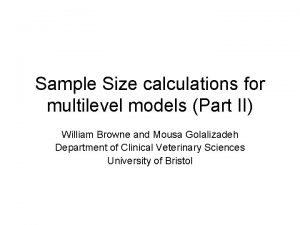
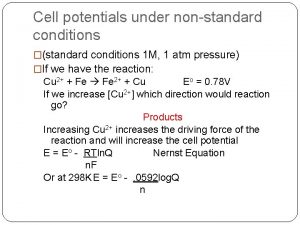




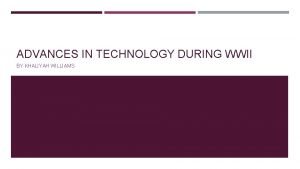






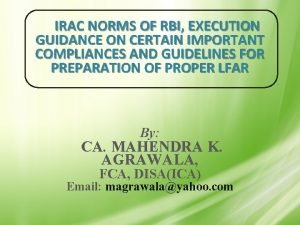


![Const int size=18; string *tb12 = new string[size]; Const int size=18; string *tb12 = new string[size];](https://slidetodoc.com/wp-content/uploads/2020/11/1588947_40cf3415d0afabae1c436a49b39f4ad0-300x225.jpg)


